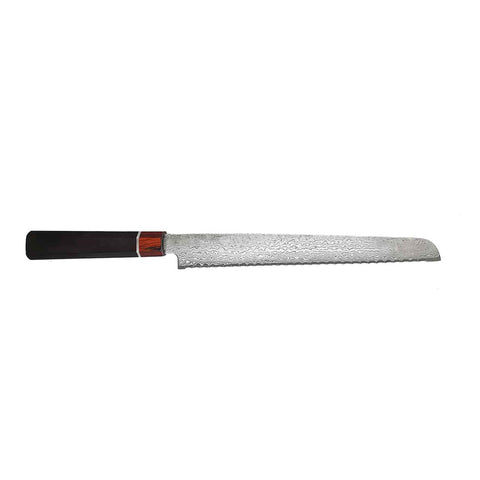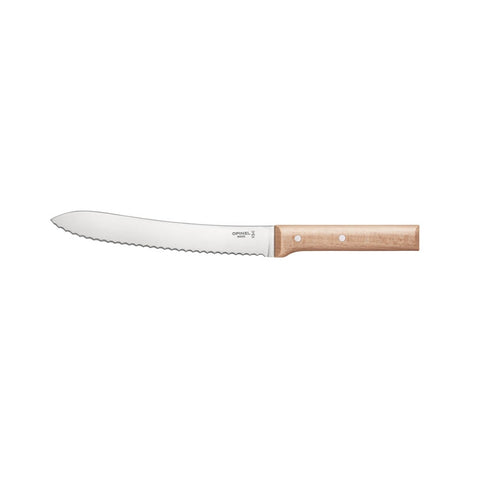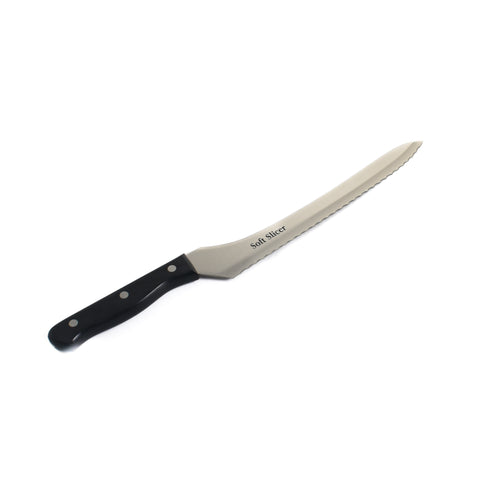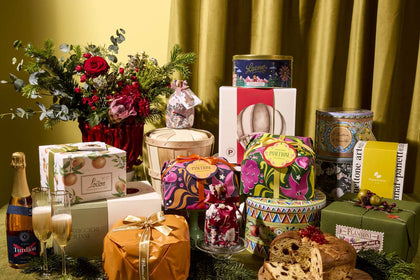Ultimate Guide to Bread Knives - Which One Should I Buy?
by Kristin Lohse

Are you looking to buy a good bread knife? The expert team at Sous Chef guides you through different bread knives available, and what to look for when buying the best Chef knife for you.
Sous Chef knife experts
In this guide, you’ll hear from Sous Chef buyer Kristin Lohse, who has many years of kitchen knife experience - and is a true expert in sharpening and caring for knives.
We’ll discuss:
- What makes a bread knife different?
- How to sharpen bread knives
- Which bread knife to buy
Everything you need to know about bread knife
Why do you need a different knife to slice bread?
A bread knife is specifically designed for slicing bread. It features a long, serrated blade that saws through the crust without crushing the soft interior.
This serration is key to cutting neatly through both hard crusts and soft loaves. Typically, bread knives have blades ranging from 7 to 10 inches, allowing for easy slicing of large and small loaves alike.
Top Tip: The serrated edge also makes them useful for any other foods with a tough exterior and soft interior, like tomatoes.
Should a bread knife always be serrated?
Yes, a bread knife should be serrated. The serrated edge is essential for cutting through the crust without squashing the soft dough.
A straight-edge knife, in contrast, would require more pressure and often compress the bread. The serrations catch and slice the crust easily, then glide through the softer middle without tearing.
Can you cut bread with a regular knife?
Yes, you can cut bread with a regular knife, but it's not always ideal. A sharp, non-serrated knife can slice through soft, fresh bread without much issue.
However, for bread with a hard exterior, a regular knife may squish rather than slice cleanly through. This is because the lack of serrations requires more pressure, which can compress the bread's texture.
What to look for when buying a bread knife
- Consider the blade length and serration type. A longer blade, around 8 to 10 inches, is best for different bread sizes.
- Look for sharp, deep serrations to handle crusty breads and soft loaves alike.
- The handle should feel comfortable and secure, offering a good grip even when wet.
- Stainless steel resists rust and is easy to maintain.
- Some knives feature offset handles, which keep knuckles clear of the cutting board.
- Balance is also key; the knife should feel steady and comfortable in your hand.
- A well-constructed bread knife can last many years, making it a worthwhile investment in your kitchen toolkit. Read any reviews you can, or buy from a trusted brand.
3 Best Bread knives - tried & tested at Sous Chef
Yasuo Black Bread Knife, 22cm - JK0047 - Beautiful damascus steel bread knife with a classic japanese octagonal handle
Opinel Bread Knife With Beechwood Handle - IC0035 - Our best selling budget friendly bread knife
Soft Slicer Bread Knife, 23cm - JK0050 - Bread knife with offset handle, ideal for soft breads
How to sharpen bread knives
Kristin explains: “You don't really need to sharpen bread knives, as they don't get dull in the same way your other knives will. Because of what they're used for, and the serration.
But if you do want to sharpen them. Below you’ll find out how you can do it. I've never sharpened any bread knives I've owned, and they still do great…!”
Step by step guide on how to sharpen a bread knife:
Firstly, bear in mind that this sharpening technique will only work on singly serrated blades. It wouldn't work on double serrated blades, such as Wusthof bread.
- Choose the Right Tool: Use a honing rod for best results.
- Secure the Knife: Place the bread knife on a stable surface with the serrated edge up.
- Align the Rod: Insert the honing rod into one of the serrations at a 20-degree angle.
- Stroke Gently: Move the rod back and forth along the serration, applying light pressure. Repeat this for each serration.
- Repeat on All Serrations: Work your way down the entire length of the knife, sharpening each serration individually.
- Clean the Knife: Wipe the blade with a damp cloth to remove any metal filings.
Sharpening a bread knife requires patience and attention to detail. Unlike straight-edged knives, each serration needs individual attention. Regular maintenance keeps the knife performing well, ensuring clean cuts through all types of bread.
Looking for more knife expertise? Read our Buyer’s Guide to Kitchen Knives, or browse all our Kitchen knives here.

About the author
Kristin is the Purchasing and Buying assistant at Sous Chef. She has several chefs and excellent home cooks in her family, and grew up in the kitchen in Sweden. Cooking and baking with her mum happened pretty much every day. Cinnamon rolls were always stocked up in the freezer, and if they were running low, more baking had to be done. Kristin always loves learning more about food and ingredients to continue improving her skills.





